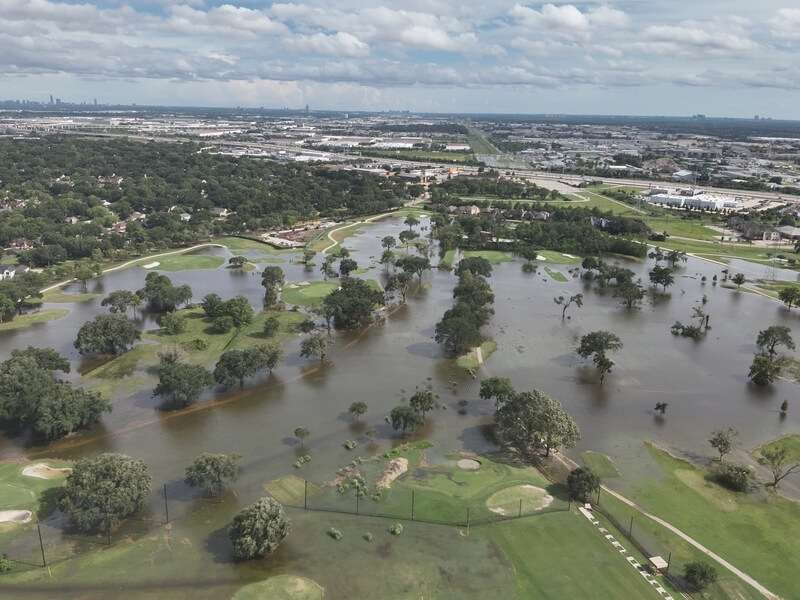
City of Jersey Village, TX
Jersey Meadow Berm & Street Drainage Improvement Project
Population less than 10,000
Located in west central Harris County, Texas, the city of Jersey Village, along with the Harris County Flood Control District, has undertaken mitigation initiatives to address the growing concern of flood damage across its neighborhoods. Major flooding events over the last two decades have caused significant destruction. Flood damage from severe weather events has continued to affect neighborhoods despite ongoing efforts, and in response, the Jersey Village Long-Term Flood Recovery Planning Study was initiated. This study produced four key recommendations, two of which merged to create a large-scale, effective flood mitigation project: the construction of berm around Jersey Meadow Golf Course, and drainage and street improvements in the Wall Street Neighborhood.
This combined project required maximized funding efficiency and sought external funding sources from the start. With a total project cost of nearly $7,000,000, project funding came from the Federal Emergency Management Agency (FEMA), the Texas Infrastructure Resiliency Fund, the Texas General Land Office (GLO), and the City of Jersey Village General Fund. Austin Bleess, City Manager, Jersey Village, led the efforts to secure project grants, and in doing so, prevented major financial costs for taxpayers and residents.
The Wall Street Neighborhood and the wider Jersey Village Community have experienced positive outcomes from the project. Not only has there been reduced direct flooding to neighborhood homes, but improved stormwater retention within the berm has contributed to an overall reduction of street and home flooding. Where previous flood events forced street closures for long periods of time, accessibility to residents and emergency services has drastically improved.
This project offers several key lessons for local government managers facing similar community challenges. These lessons are also transferable across city-led projects.
Integrating mitigation strategies. This project demonstrated how tactical integration of several mitigation strategies into a single project plan led to a maximization of effectiveness and impact while streamlining funding and optimizing results.
Diversifying funding resources. For this project to succeed financially, Jersey Village actively sought external sources of funding through state and federal grants. This strategy not only enabled the project to begin quickly and efficiently, but lessened the financial burden for local taxpayers, and demonstrated the effectiveness of the pursuit of grant opportunities.
Cross-collaboration and partnership. The City of Jersey Village worked closely with multiple levels of government and private entities to see the project through. These partnerships leveraged the resources of various experts to align and enhance the project's feasibility, implementation, and long-term impact.
Innovative Leadership. This project had to be strategically led to expand upon existing flood mitigation efforts and implement a new infrastructure model. Jersey Village worked closely with expert engineers to develop a plan that maintains local recreational spaces while targeting water detention. This led to the creative integration of the local golf course as a flood mitigation tool.
Community Engagement. This project would not have been successful without the support and mobilization of the larger community and the residents directly impacted by severe weather conditions. Large-scale infrastructure projects require community engagement to ensure that residents’ needs are met, and to build trust and transparency with the public.
The role of local government managers is critical in properly identifying community challenges. By channeling creativity, problem solving, and proactive critical thinking, local government managers can implement sustainable solutions that drastically improve the safety and prosperity of residents’ lives.
